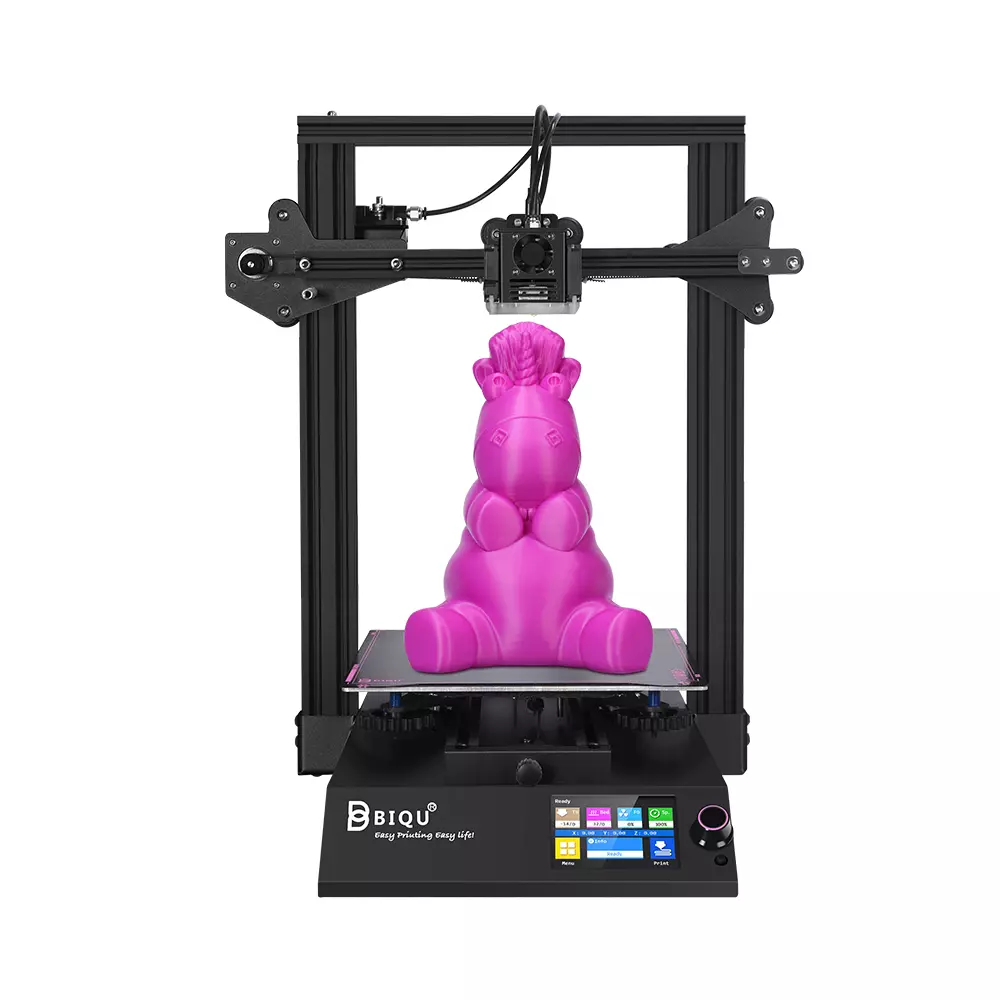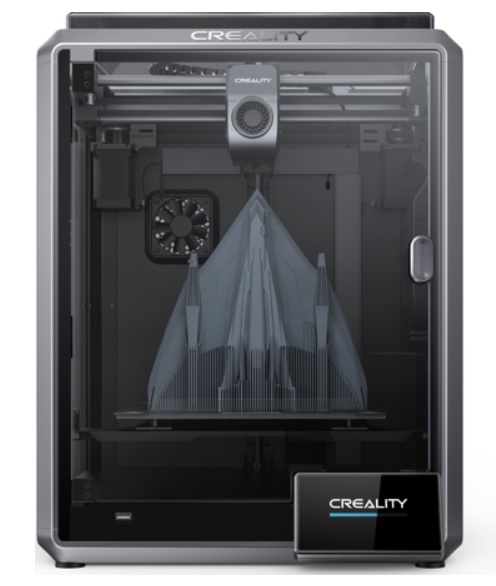Compare BIQU B1 vs K1
Comparison between the best 3D printers
Choose the best 3D printer at the best price. The cheapest 3D printers are here.
Buy a 3D printer here with 3D Fila.
 |
 |
|
| Model | BIQU B1 |
K1[BUY K1] |
| Printing Material | Filament | Filament |
| Buy Filament for BigTreeTech BIQU B1 | Buy Filament forCreality 3D K1 | |
| Estimated price | $269,00 | $399,00 |
| Manufacturer | BigTreeTech | Creality 3D |
| Release Year | 2020 | 2023 |
| Print Volume [mm] | 235x235x270 | 220x220x250 |
| Printer Size [mm] | 412x402x492 | 355x355x480 |
| Weight [kg] | 8,00 | 12,5 |
| Power Loss Recovery | YES | YES |
| Enclosed printer | NO | YES |
| Bed Leveling | Manual | Automatic |
| Filament End Sensor | YES | YES |
| Bed type | Heated | Heated |
| Power supply system | Bowden | Direct Drive |
| Standard nozzle | 0,4 | 0,4 |
| Maximum Nozzle Temperature [°C] | 250 | 300 |
| Maximum Bed Temperature [°C] | 100 | 120 |
| Maximum printing speed [mm/s] | 100 | 600 |
| Filament holder | YES | YES |
| Camera for supervision | NO | NO |
| Recommended filaments | PLA, TPU, ABS, PETG | ABS, PLA, PETG, PET, TPU, PA, ABS, ASA, PC, PLA-CF, PA-CF, PET-CF |
| Recommended slicers | Cura, Simplify, Slic3r | Creality Print; Cura, Simplify3D e PrusaSlicer |
| Maximum Resolution [mm] | 0,1 | 0,1 |
| Processor | 32 Bits BTT SKR V 1.4 | |
| Display | Touchscreen TFT 3,5'' | Display touchscreen 4,3'' |
| Power Supply | 24V / 360W | 110/220V / 350W |
| Connectivity | SD / USB | Ethernet / USB / Wi-Fi |
| Operating systems | Windows, Mac, Linux | Windows, Mac, Linux |
| Date of registration in the system | 2021-04-14 | 2023-04-17 |
| Release date | 2020 | 2023 |
| Extra features | The BIQU B1 is an advanced 3D printer with a silent 32-bit BTT SKR V1.4 motherboard and ARM Cortex-M3 CPU, offering DIY interfaces (I2C, SPI, WiFi) and dual Z-axis. Its dual BTT B1 TFT35 V3.0 operating system allows real-time monitoring and multiple printing modes, including G-code visualization effects. It stands out for its BIQU SSS (Super Spring Steel), ensuring easy model adhesion and simplified removal, with the possibility of using it on both sides. It includes a filament sensor, automatically pausing printing in case of filament breakage. The multicolored RGB lights integrated into the hotend allow you to view the printing status even at night. Additional notes include the need for a BIQU-specific Type-C cable and extra interfaces for smart filament sensor and BL Touch. | The K1 is an extremely fast FDM 3D printer, reaching 600mm/s, 12 times faster than standard models. Equipped with a Core XY system and lightweight print head, it offers energy efficiency and high print quality. It stands out for its dual-gear extruder and quickly heated hotend, as well as dual cooling to prevent warping. Its robust structure ensures stability at high speed, with optimized software to speed up the printing process. |
| Support for multiple colors and materials (AMS and CFS) | NO | NO |
Notes * |
||
| Cost-benefit | 7 / 10 | 8 / 10 |
| Hardware | 2 / 10 | 4.8 / 10 |
| Tela | . | . |
| Print volume | 3 / 10 | 3 / 10 |
| Performance | 1 / 10 | 5 / 10 |
| [BUY K1] |
Conclusion |
| In comparing the BIQU B1 and Creality 3D K1 3D printers, both models offer distinct advantages catering to different user needs and budgets. The BIQU B1, released in 2020, stands out for its affordability and user-friendly features such as manual bed leveling and a filament end sensor. Its design emphasizes accessibility through an easy-to-use interface, making it ideal for beginners and hobbyists looking for a budget-friendly option. It also boasts a decent print volume and is known for reliable performance with various filaments. On the other hand, the Creality 3D K1, launched in 2023, showcases advanced technology and superior performance capabilities. With its automatic bed leveling, high maximum printing speed, and robust build, the K1 is designed for users seeking efficiency and high-quality prints. It also supports a broader range of materials and comes with enhanced connectivity options, such as Ethernet and Wi-Fi, appealing to more experienced users or those requiring high-volume printing. While the BIQU B1 represents a commendable entry-level printer with great value for money, the K1 justifies its higher pricing with advanced features and performance metrics that cater to demanding projects. Ultimately, the choice between the two will depend on the user's specific requirements, budget constraints, and whether they prioritize cost-effectiveness or high-speed printing capabilities. |

